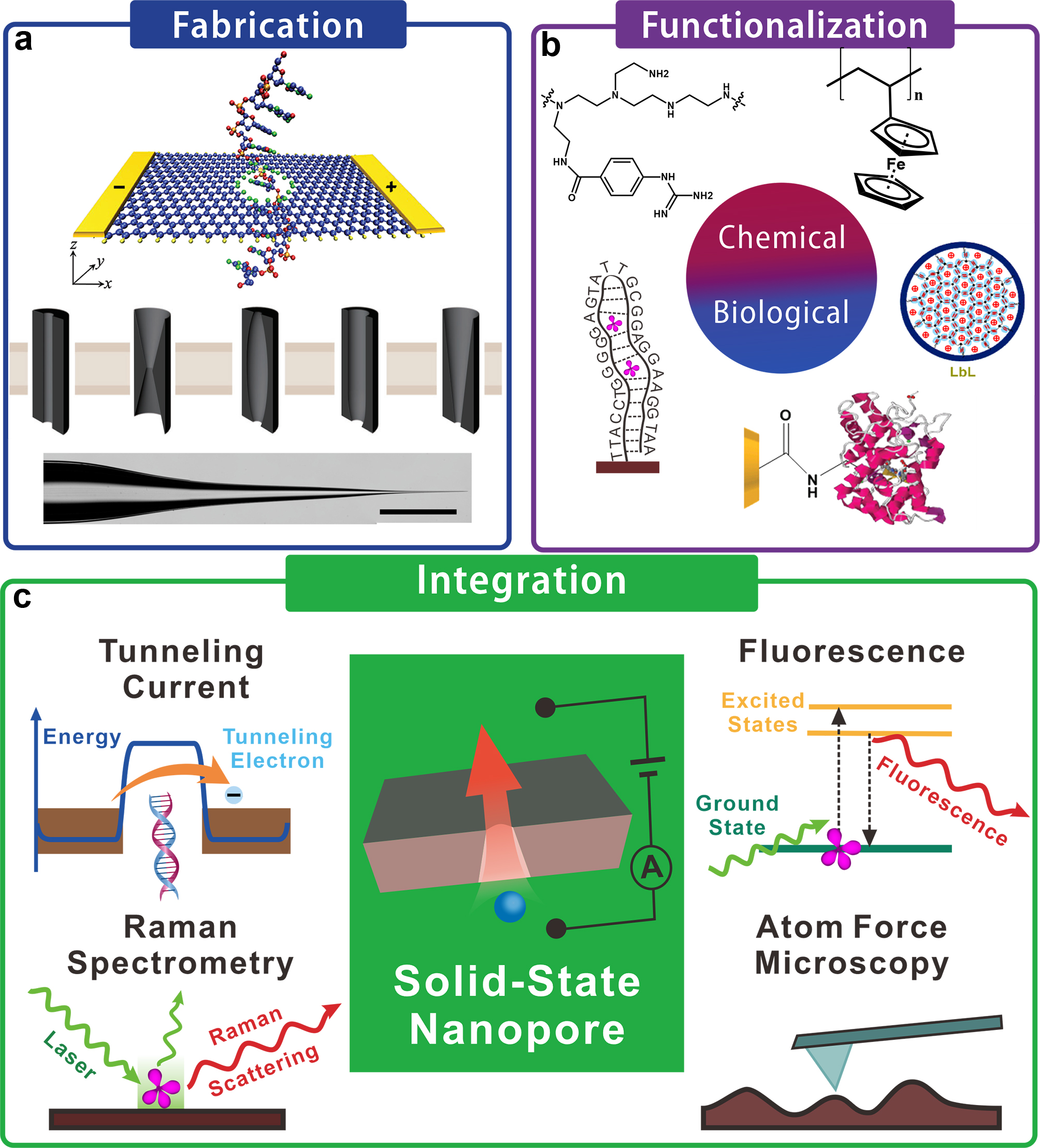Solid-state nanopores and nanochannels for the detection of biomolecules
Time:2021-07-06 22:39 Author:Hang Yang
Hang Yang and Guangyan Qing*
Chem. Phys. Rev. 2021, 2, 021306

Enormous achievements have been made in solid-state nanopores and nanochannels since they were first introduced in 2001, and they have demonstrated potential in biological applications such as DNA sequencing and single-molecule detection. The confined space inside nanopores and their functionalization strategies provide nanopore detection with more unique advantages than any other detection method. Solid-state nanopores avoid the intrinsic fragility of biological nanopores and have excellent robustness and manufacturability. However, the sensitivity, selectivity, controllability, and reproducibility of solid-state nanopore detection for biological detection remain to be investigated. Scientists have made remarkable progress in all aspects of the field, including fabrication, functionalization, and biological application, to address the aforementioned research gap and to reveal the potential of solid-state nanopores’ application in biomolecule detection. This review describes the state-of-the-art results and provides readers with comprehensive insights into the current status and future directions of solid-state nanopores. This review provides a brief introduction to the principles and development of solid-state nanopores over the last two decades and then summarize the advances made over the last 5 years. Fabrication protocols of various types of nanopores and nanochannels are described, including silicon nitride-based pores, polymer nanochannels, and glass nanopipettes. Moreover, appending and functionalization strategies that confer advanced physical and chemical properties to solid-state nanopores are discussed. Finally, the potential applications of solid-state nanopores are demonstrated, from DNA and drugs to proteins and viruses.